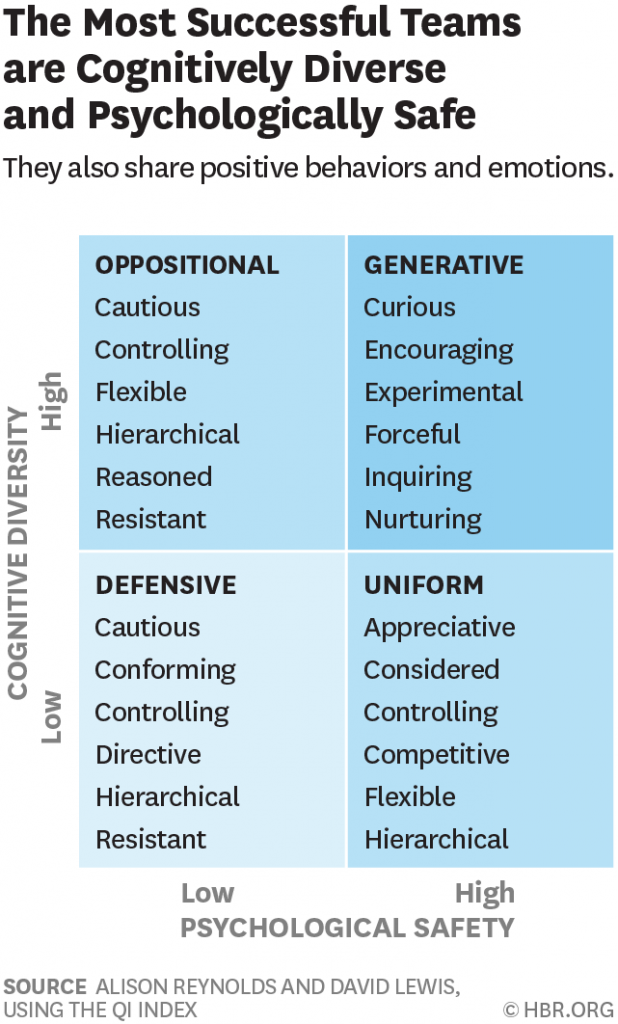One of the primary differences between Strategic Sourcing and Category Management is an increased focus on Change Management. One of the most powerful Change Management techniques is Working in Teams. The concept seems simple enough BUT there is an art to teaming as well as a science. I recently read an article in HBR, “The Two Traits of the Best Problem-Solving Teams” and it brought back many of the lessons we teach about teaming in our Strategic Sourcing boot camp.
Working in teams can be complicated. We usually put together a team because we need and value diversity in:
- Skills
- Ideas
- Experience
- Connections / relationships within the organization
- Personality styles
- Behavior
- Etc.
- Etc.
This diversity, while valuable, can also be a source of frustration and intimidation. To support getting the most out of a carefully chosen diverse team, fostering high quality interaction and participation is key. A major component of our boot camp is forming diverse teams, presenting them with a problem to solve and watching how they work together or NOT. We observe the way each team member behaves, how they work with the rest of the team members and how their behavior creates either harmony or discourse within the team. The teams that create a psychologically safe environment; allowing everyone to speak without criticism, welcoming new ideas and bringing everyone into the discussion are ALWAYS the most successful. We don’t assign leaders to our teams BUT those that assume a leadership role can have a significant impact on the team.
Here is the model from the HBR article:

What I found most interesting about this article is the notion that individuals “choose” their behavior. We all know or have worked with someone who we would consider to be a “bully”. Regardless of what team they are part of, they always manage to cause disruption, don’t listen to others and think they are always right. It is the positive behaviors – curious, inquiring, and nurturing that are necessary to create that safe environment that is so critical.
“How people choose to behave determines the quality of interaction and the emergent culture. Leaders need to consider not only how they will act, but as importantly, how they will not act. They need to disturb and disrupt unhelpful patterns of behavior and commit to establishing new routines. To lay the ground for successful execution everyone needs to strengthen and sustain psychological safety through continuous gestures and responses. People cannot express their cognitive difference if it is unsafe to do so. If leaders focus on enhancing the quality of interaction in their teams, business performance and well being will follow.”
While some of this may seem like motherhood and apple pie to some of you, it is ABSOLUTELY necessary when working in teams. If you want people to make change happen – such as moving to a more strategic process like Category Management, you need to create an environment where they can feel safe, try new things, maybe fail and try again. If you are a leader trying to move from Strategic Sourcing to Category Management you MUST give this some serious thought. Are you giving your team an opportunity to fail (safely) so they can learn and grow as a team? Failure does not need to be viewed as negative as long as you use it to make improvements to move forward. Take a step back, assess your team and ensure you have created a Fail-Safe environment.
Let us know what you think and join in the conversation . . . .



1 Comment
Pingback: Why You Might Need Some Governance - News You Can Use